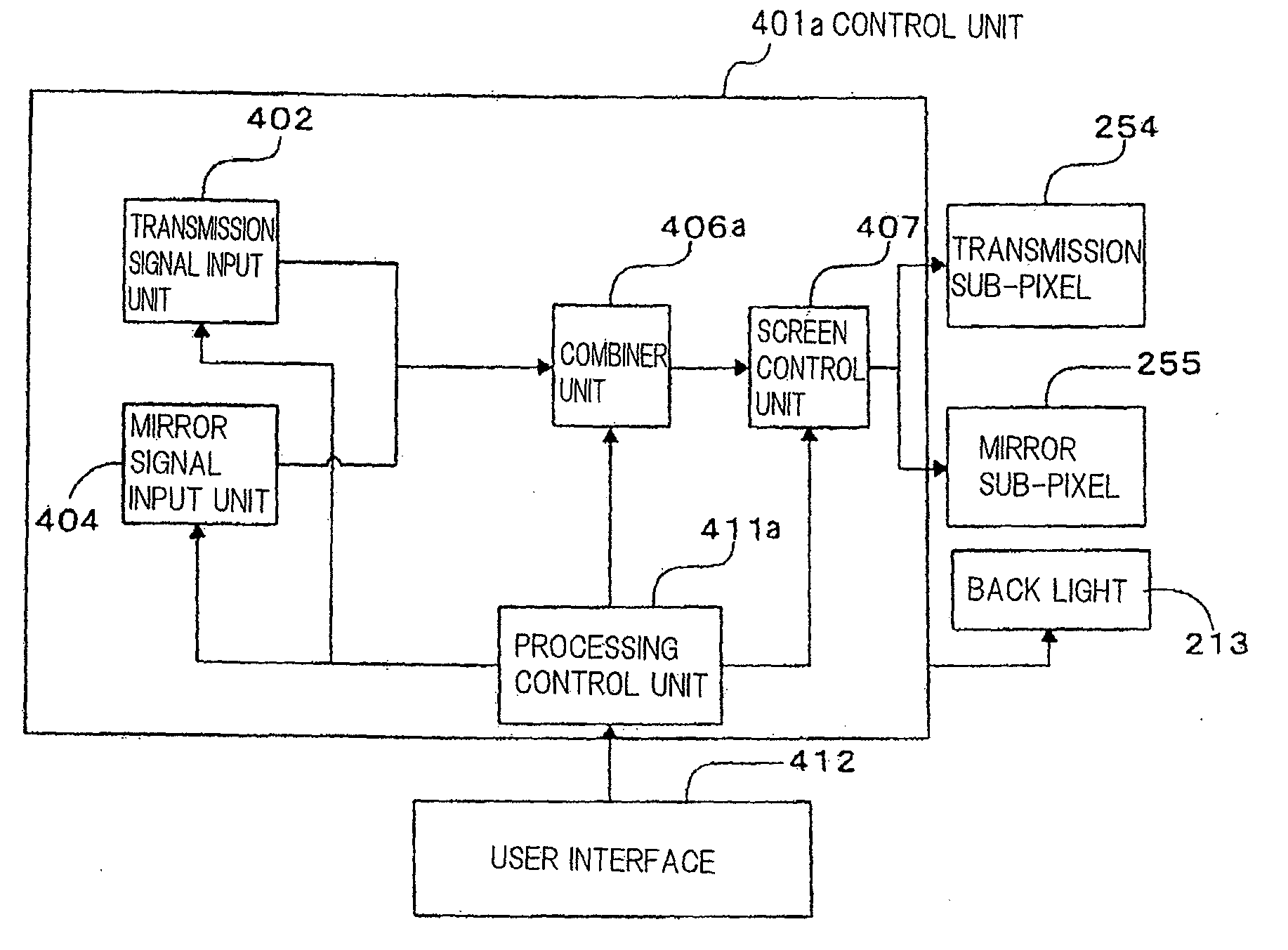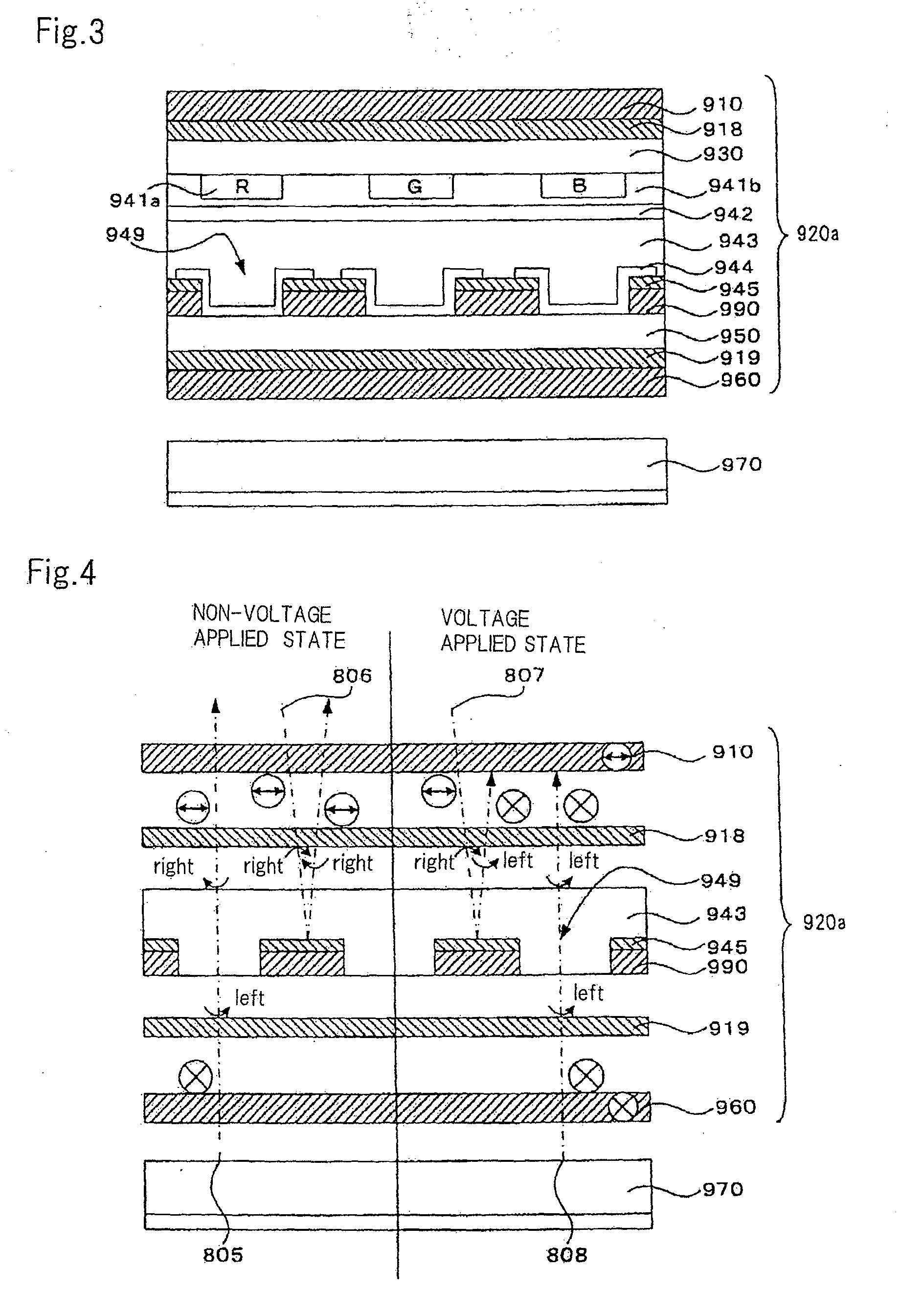Liquid crystal display device, electronic device comprising same, and controller for liquid crystal display device
- Summary
- Abstract
- Description
- Claims
- Application Information
AI Technical Summary
Benefits of technology
Problems solved by technology
Method used
Image
Examples
first embodiment
[0085]FIG. 5 is a schematic diagram showing the configuration of circuits in a liquid crystal display device according to a first embodiment of the present invention. This liquid crystal display device comprises two types of sub-pixels: transmission sub-pixels 254 which is a transmission area that allows light irradiated from a back light to be transmitted, and mirror sub-pixel 255 which is a mirror area that reflects external light to produce a mirror state. In this liquid crystal display device, one pixel is made up of a plurality of transmission sub-pixels 254 and a plurality of mirror sub-pixels 255.
[0086]The liquid crystal display device according to this embodiment is characterized in that each transmission sub-pixel 254 and each mirror sub-pixel 255 can be controlled independently, as will be later described in detail. In this way, this liquid crystal display device can realize a screen mode in which a display mode and a mirror mode can be mixed on a single screen.
[0087]In th...
second embodiment
[0164]Referring next to FIGS. 15A and 15B, a description will be given of a liquid crystal display device according to a second embodiment of the present invention. The liquid crystal display device according to this embodiment is configured in a manner similar to the liquid crystal display device according to the first embodiment except for the waveforms of the voltages which are applied for driving the liquid crystal display device. Therefore, the following description will be given with reference to the drawings which were used for describing the configuration of the liquid crystal display device according to the first embodiment.
[0165]Referring first to FIG. 15A, a description will be given of the display mode of this liquid crystal display device. FIG. 15A shows the waveforms of voltages VG, VD, and VCOM which are applied to gate line 253, drain line 252, and common electrode 205, respectively, during G1 duration in the display mode.
[0166]The value of VG is set to VGH only duri...
third embodiment
[0200]Referring next to FIGS. 16 and 17, a description will be given of a liquid crystal display device according to a third embodiment of the present invention. The liquid crystal display device according to this embodiment is constructed in a manner similar to the liquid crystal display device according to the first embodiment except for the control unit. FIGS. 16 and 17 correspond to FIGS. 9 and 10 in the first embodiment, where the same components are designated by the same reference numerals.
[0201]FIG. 16 is a block diagram showing a screen control function of the liquid crystal display device, and FIG. 17 is a diagram showing an example of screen control process in accordance with the screen control function. FIG. 17 shows a screen control process in the screen mode shown in FIG. 8A as an example of the screen control.
[0202]This liquid crystal display device does not comprise combiner units 403, 405 shown in FIG. 9.
[0203]Specifically, combiner unit 406a combines image display ...
PUM
 Login to View More
Login to View More Abstract
Description
Claims
Application Information
 Login to View More
Login to View More - R&D
- Intellectual Property
- Life Sciences
- Materials
- Tech Scout
- Unparalleled Data Quality
- Higher Quality Content
- 60% Fewer Hallucinations
Browse by: Latest US Patents, China's latest patents, Technical Efficacy Thesaurus, Application Domain, Technology Topic, Popular Technical Reports.
© 2025 PatSnap. All rights reserved.Legal|Privacy policy|Modern Slavery Act Transparency Statement|Sitemap|About US| Contact US: help@patsnap.com



